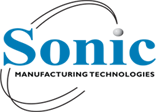
Common PCB Surface Finish Types
Protect your PCBA with the best surface coating based on your application and board specifications. Learn more here.
One of the most essential steps in the design of your printed circuit boards (PCBs) is the surface finish. The PCB surface finish you choose will help protect the copper circuitry from corrosion. It also provides a solderable surface. You can work with your PCB manufacturer to determine which surface finish is right for your needs.
Here are the most common types of PCB surface finishes, along with their advantages and disadvantages. This information will help you determine which options are best for your boards!
Hot Air Solder Leveling (HASL)
HASL is the least expensive type of PCB surface finish. It’s widely available and economical, which is why it’s also the most common. This process dips the board in molten solder and then levels it off with a hot air knife.
HASL works well if you’re using through-hole or larger components, though it’s not recommended for smaller components. The reason for this is that HASL isn’t completely level, so it can cause issues. Both lead and lead-free options are available.
Immersion Tin (ISn)
Immersion coatings use a chemical process that deposits a flat layer of metal into the copper traces. The flatness of the coating makes ISn a great choice for small components. Tin is also the least expensive type of immersion coating, so you can save money by choosing this surface finish.
We recommend ISn for situations where you’re expecting a high volume of production. If you’re not, we recommend something like immersion silver instead. The reason for this is because the tin starts to tarnish quickly, which means you’ll have to do your soldering within 30 days.
Immersion Silver (IAg)
While immersion silver is more expensive than immersion tin, it eliminates some of the drawbacks that you’ll get with immersion silver. IAg does not react with copper in the way that tin does.
However, IAg can still tarnish when exposed to air, so you’ll want to store the board in anti-tarnishing packaging. When stored in the proper conditions, the board will be solderable for up to 12 months. For a longer shelf life, we recommend gold plating as well.
Electroless Nickel Immersion Gold (ENIG)
This type of finish consists of a thin layer of gold over electroless or electrolytic nickel. It’s hard and durable, and also has a long shelf life. But in exchange for these benefits, you’ll also pay more. However, if you’re looking for excellent flatness, good oxidation resistance and high temperature resistance, ENIG may be worth the money.
When choosing a surface finish for your PCB, you’ll need to take many factors into consideration, including the component types and production volume. To discuss the best surface finishes for your PCB, contact Sonic Manufacturing Technologies today.
CALL FOR A QUOTE
(510) 580-8500
OR EMAIL:
Sales@Sonicmfg.com
